Bybee Technologies iQSE V2s
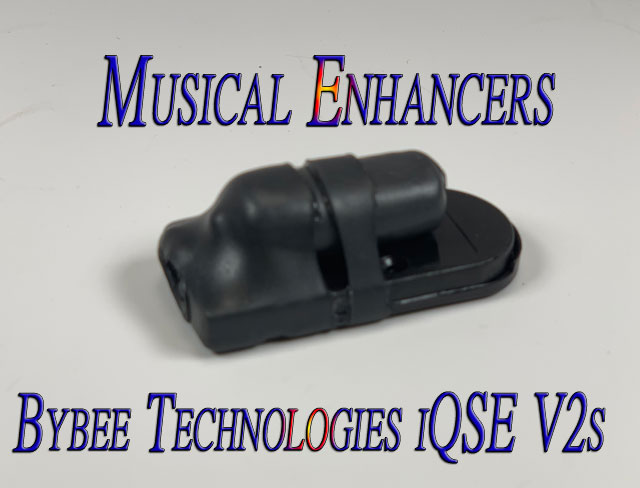

It’s a sad fact that most folks who call themselves music lovers do not tweak. For reasons yet obscure, many audiophiles just don’t believe in it. They act as though tweaking requires too much experimentation and not enough fundamental science. Most nonbelievers claim that “tweaks” are part witchcraft and part BS. Maybe they were burned by a product that didn’t work as promised or maybe they were put off by the pseudoscience that permeates commercialized society. The fact is, dear readers, that tweaking can enhance your musical enjoyment beyond what you thought economically feasible.
I’ve discovered a device that I consider absolutely essential to the music lover, probably the most valuable tweak I’ve encountered in 25 years: the Bybee Quantum Signal Enhancer, Version 2 (iQSE V2).
Jack Bybee, for those who do not already know, is a retired quantum physicist who helped develop top-secret sonar technology for the Navy during the Cuban Missile Crisis. At 89, Bybee says he’s still learning about improving sound reproduction. In 25 years work in the audio field he’s been able to remove various types of distortion with remarkable results. The iQSE V2 is a giant step in this tradition.
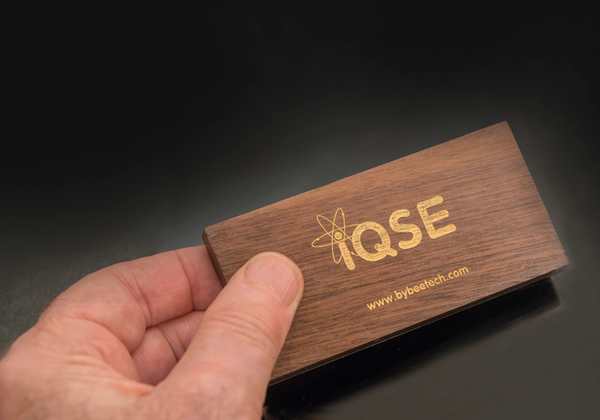
Bybee’s greatest moment, in my opinion, was when he introduced the audio community to Quantum Signal Enhancers (herein iQSE) a few years ago (read review here). These devices will positively impact any component when placed in proximity to that product. Noise floor, resolution, dynamics: all improved. More devices, greater improvement.

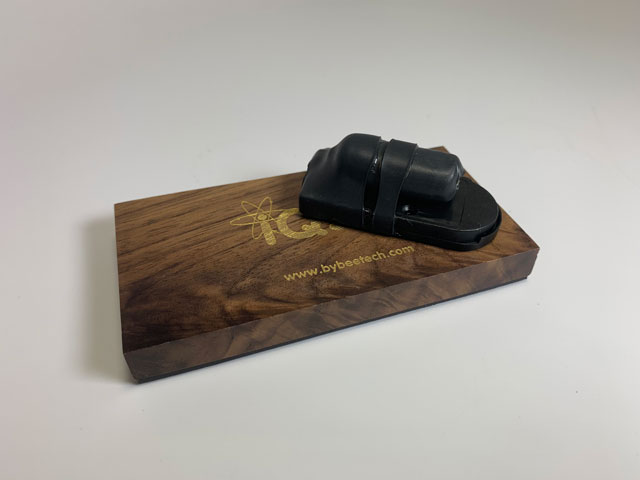
The Version 2 is odd looking, resembling an oversized beetle, about 2″ long, 1″ wide and 1″ tall. It is built on a flat plastic surface which is also a battery pack. The device consumes so little energy that the pack should last a lifetime.
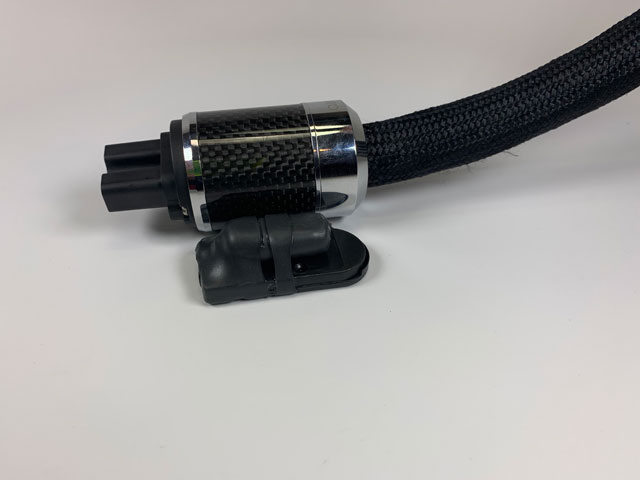
 I had hoped they could be stashed inside one of my components. Nope. Bybee suggested I try them directly in front of the midrange horn and woofer section of my Sunny Majestic’s, about three feet high and twelve feet away. Then I plopped down in my listening chair and sought a familiar song on my Laufer Teknik Memory Player. At first, I didn’t hear anything special. But after half an hour I noticed that Charles Mingus’ upright on II B. S. (from his famous 1963 Impulse recording entitled “Mingus Mingus Mingus Mingus Mingus”) was noticeably cleaner, faster and more authentic in its tonal shadings. Hmm, this was odd. I removed the iQSE V2s from the room and played the same track. The sound was good, but it had lost breadth and clarity.
I had hoped they could be stashed inside one of my components. Nope. Bybee suggested I try them directly in front of the midrange horn and woofer section of my Sunny Majestic’s, about three feet high and twelve feet away. Then I plopped down in my listening chair and sought a familiar song on my Laufer Teknik Memory Player. At first, I didn’t hear anything special. But after half an hour I noticed that Charles Mingus’ upright on II B. S. (from his famous 1963 Impulse recording entitled “Mingus Mingus Mingus Mingus Mingus”) was noticeably cleaner, faster and more authentic in its tonal shadings. Hmm, this was odd. I removed the iQSE V2s from the room and played the same track. The sound was good, but it had lost breadth and clarity.
Similar in theory to the Stein Music Harmonizers that I reviewed (here), nine years ago (and that The Absolute Sound wrote glowingly about only last year), the iQSE V2’s also claim to work by effecting air molecules.
How?
Lets look at some interesting facts.
Sound is a physical wave propagating through a medium. In air, under specified conditions, sound moves at 343 m/s. Temperature, humidity, altitude, turbulence have an effect on propagation speed. Higher humidity actually makes the air less dense, allowing sound to travel faster. When the air is hot, its molecules move faster, also allowing sound to travel faster.
You’ve probably never thought of air as viscous, but it is. When you push against the air, you encounter resistance. This is why aerodynamics are essential knowledge in the design of objects that move through the air at high speed. Sound travels at high speed too, so would it not encounter the same viscosity?
Also propagating high frequencies is more lossy (more viscous) than low frequencies, resulting in phase shifts. Then there are room interactions: reflections, bass nodes, standing waves, etc. And what about loss of detail that might be accruing between your listening position and your loudspeakers? Considering we are dealing with such low level information, would this loss be significant over such a small distance?
Tweaking Air
What if air could be made less lossy in sound transmission? Perhaps more of the sound leaving a loudspeaker would reach the ears of the listener more coherently, that is with less phase shift and distortion?
I suppose we could bring in humidifiers and heaters to see if they would indeed affect sound transmission of our listening room. Perhaps they would. But excessive heat and humidity are not my idea of comfort.
Resonance
But it is not only heat that can excite air molecules, resonance can too. Every object in the universe has a resonant frequency. Wikipedia states that mechanical resonance “…is a phenomenon that only occurs when the frequency at which a force is periodically applied is equal or nearly equal to one of the natural frequencies of the system on which it acts.” If we want to excite air molecules, we might use the resonant frequencies of the predominant molecules in our atmosphere.
The most plentiful molecules that make up earth’s atmosphere are nitrogen (78%) and oxygen (21%). We could use a frequency generator to do this perhaps. It would be costly and take up room. Jack Bybee does it using proprietary chemical elements in the iQSE that excite the resonant frequencies of oxygen and nitrogen, thus making the air more compliant, less lossy.
Sonic impressions
Having only two Bybee iQSE V2’s to start with, I placed one on the front wall between the loudspeakers, the other right behind my head. That proved to do nothing that I could confidently identify. I then moved the one behind me beside the one on the front wall. Voilà! This provided more sonic improvement than when the iQSE V2’s were perched directly in front of the loudspeakers! Instruments appeared even more clearly defined and rounder while the overall balance was lighter, silkier and airier. Though the weight of the musical presentation appeared lighter, more nimble yet surer afoot, in no way did the music lose its heft or muscularity.
I thought to myself, Before I settle on this position, try placing them inside your amplifier… So I popped the hood on my Behold amps and placed an iQSE over the power supplies.
God help me
 This was the best position yet! I could hardly believe what happened. The noise floor immediately dropped to the point where everything became eerily quiet and I became somewhat uncomfortable, unsure how to handle all this. I dug deep into my musical archives, starting with New York Tendaberry, featuring Renee Fleming from Billy Childs’ excellent recording “Map to The Treasure.” I just sat there slack jawed, absolutely bewildered at how free flowing and gorgeously full-bodied Renee’s voice was. I did a double-take and checked my monitor for disc resolution. Yep, 16/44, though it sounded as if it were upsampled or remastered in triple DSD. Renee’s voice stood out beautifully, slightly in front of a vivid and richly detailed soundstage. A soft glowing radiance seemed to highlight each musician.
This was the best position yet! I could hardly believe what happened. The noise floor immediately dropped to the point where everything became eerily quiet and I became somewhat uncomfortable, unsure how to handle all this. I dug deep into my musical archives, starting with New York Tendaberry, featuring Renee Fleming from Billy Childs’ excellent recording “Map to The Treasure.” I just sat there slack jawed, absolutely bewildered at how free flowing and gorgeously full-bodied Renee’s voice was. I did a double-take and checked my monitor for disc resolution. Yep, 16/44, though it sounded as if it were upsampled or remastered in triple DSD. Renee’s voice stood out beautifully, slightly in front of a vivid and richly detailed soundstage. A soft glowing radiance seemed to highlight each musician.
And this was only a pair of iQSEs. Placed inside the amplifiers, my pair of V2s mimicked an excellent AC conditioner at a mere $800. What the hell would happen if I could add an additional pair on the front walls? I spoke at length with Bybee about all of this. One thing baffled me: if the V2s “make Nitrogen more compliant,” then please explain how they’d impact the innards of my amplifiers? Jack reminded me that his Quantum Signal Enhancers have always been optimized to quell noises inside components as well as act on air molecules.
As I awaited additional units from Bybee, I began thinking about who might also want to hear what these new devices could do. This, of course, led to many late-night phone calls. I wanted to inform all my friends nearby of this discovery hoping I could get them over for a listen. I wanted to accomplish this without telling them what the actual product is—just that for $800 this tweak could compete with state of the art $10,000 AC conditioners. By the middle of the week a USPS package from Bybee Technologies arrived at my doorstep. Inside were four additional iQSE V2s. The first pair went back on the stands in front of the loudspeakers, while the other pair went back on the front wall.
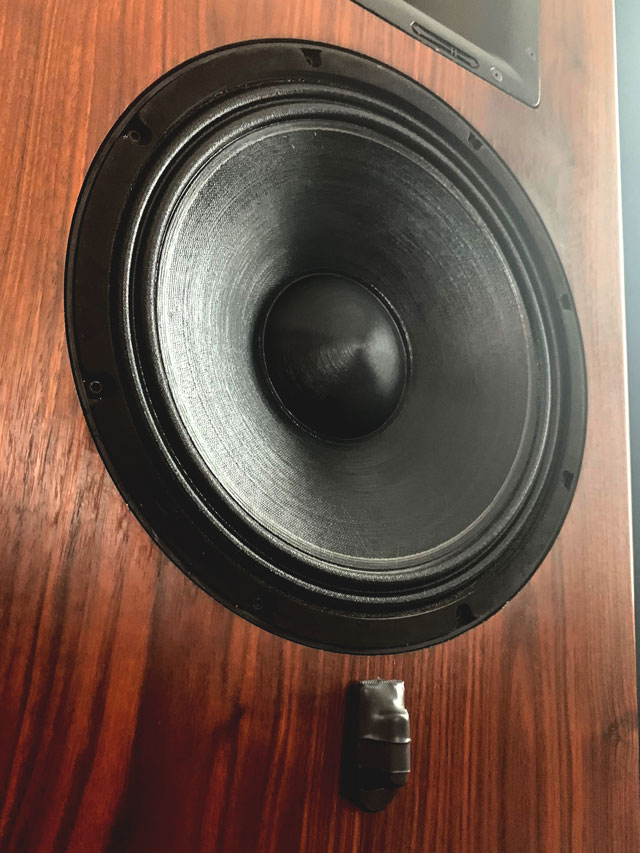
Okay, so what does $2,400 worth of iQSE V2s sound like?
On a hunch, I decided to try a completely different configuration since I now had six V2s on hand. I left one pair in my amplifiers. I applied BluTac to my Sunny Majestic’s and stick one pair directly beneath the midrange driver and one pair below the 18″ woofers.
Listening, I found a new clarity, resolution, front-to-back layering and articulation. The more I listened, the more apparent it became. New York Tendaberry had a grandeur of dynamic shadings and contrasts previously lacking. At the same time Renee Fleming seemed even better focused and more full-bodied. Dynamic contrasts and range improved. The quality of reproduction blurred the demarcation between live from recorded sound!
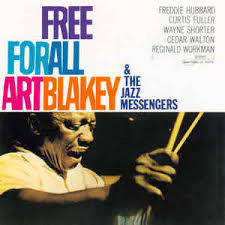 Contradictions overwhelmed me. I was hearing the most detailed and delicate fingering on the upright followed with life-like dynamics off the snare drum. Art Blakey’s accents and cymbal dexterity are legendary, but never so unashamedly clear and with this much presence. Blakey’s ambidextrous play against the backdrop of his fierce horn section (featuring personal favorites like Freddie Hubbard, Curtis Fuller and Wayne Shorter) in Free for All, from the 1964 self titled album sounded better than ever. Ditto Coltrane’s heaven-inspired solo (and farewell) performance on Teo from Miles Davis’ “Someday My Prince Will Come.” (This was his last with Davis before starting his own legendary quartet.)
Contradictions overwhelmed me. I was hearing the most detailed and delicate fingering on the upright followed with life-like dynamics off the snare drum. Art Blakey’s accents and cymbal dexterity are legendary, but never so unashamedly clear and with this much presence. Blakey’s ambidextrous play against the backdrop of his fierce horn section (featuring personal favorites like Freddie Hubbard, Curtis Fuller and Wayne Shorter) in Free for All, from the 1964 self titled album sounded better than ever. Ditto Coltrane’s heaven-inspired solo (and farewell) performance on Teo from Miles Davis’ “Someday My Prince Will Come.” (This was his last with Davis before starting his own legendary quartet.)



This level of reproduction had a strong sense of familiarity about it—but not from my own system. Rather it belongs to the few exalted, high-efficiency horn-based (money is no object) systems I’ve always admired on my travels here and in Europe and Asia (photos above). This had always eluded me. I thought because of choosing the maintenance-free life of solid-state amplification over the harmonically rich but complicated life of a tube-based system. That consideration might have been true…until the arrival of the Bybee iQSE V2. Now I hear all the earmarks of a tube-based system in my all-solid-state one, along with the subtly soft top end and low-end tautness many tube-based systems have been accused of lacking.
I contacted Bybee and told him my findings. Wouldn’t it be nice if he could manufacture these gadgets for the mass market? They’re too good to make only for a choice few. Bybee agreed and announced some weeks later that the iQSE V2s would be available from Tweek Geek.
My good friend Dennis Parham came down without my saying a word about what I had discovered. I just wanted his ear; he had no idea as to why. After a few minutes he said, “Wow, this sounds very different, …effortless and easy on the senses, …and the see-through quality has really improved.” Next to visit was my talented writer, neighbor and friend Greg Voth. Suspicious of tweaks in general, he asked, “What the hell did you do now?” After listening he commented, “…the overall ease and sense of scale, the grace and dynamic energy is so much more tangible and alive sounding. This is crazy!”
Next up was talented musician, friend and confidant Billy Drummond. After only a short spell of listening he lamented “Hey P, are you sure that the Bybees are doing all this? The linearity here is so flat. Nothing is forward, bumpy or sharp sounding. Yet everything’s so see-through, musical and pure. Damn!”
Moreno Mitchell’s wrote, “I was up until the wee hours of the night marveling and trying to grasp what I was hearing. I played CD after CD with my jaw on the floor. The music got louder without having to turn up the volume. Each instrument became more apparent in their own space. The noise floor dropped tremendously with a quiet that was borderline eerie. The bass smoothed out displaying even more of what these Tekton Encores are capable of! Jack has really outdone himself here.”
The results were in. All these auditioners heard the purity of each instrument, an increase in resolution (especially in the higher frequencies), a realism and authenticity without the usual tininess, brightness or glare that often accompanies such changes. Bass sounded leaner due to its increased speed and pitch but at the same time it was more linear and deeper and more dynamically impactful. Surprisingly, the V2s provided many less-than-stellar-sounding songs better tone and synergy, especially in the low-end.
Caveats
The only downside I find is the asking price. At $400 a pop, they’re not affordable if you’re going to optimize your system with many. A single pair can benefit your system greatly. Unfortunately, to hear what I’ve been referencing, you’re going to need at least eight. One good piece of news: Tweek Geek has a special where you can purchase four for $1500 or eight for $2,600. All this with a full 30-Day return guarantee.
In Closing
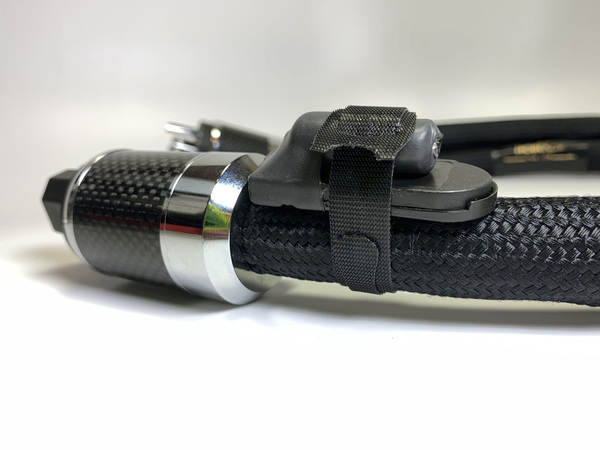 It’s not easy to fathom how these little devices produce such improvement. Dave Caplan swears that in his system they really sound great when used alongside his Shakti Hallographs, while Ron Cook swears they sound better when placed on his AC powercords than placed inside his components. It’s obvious that location may vary and be based on individual tastes. Just a pair on my front wall demonstrated what was possible, while an additional four did what some of the most celebrated AC conditioners, speaker cables and other enchanted tweaks could not.
It’s not easy to fathom how these little devices produce such improvement. Dave Caplan swears that in his system they really sound great when used alongside his Shakti Hallographs, while Ron Cook swears they sound better when placed on his AC powercords than placed inside his components. It’s obvious that location may vary and be based on individual tastes. Just a pair on my front wall demonstrated what was possible, while an additional four did what some of the most celebrated AC conditioners, speaker cables and other enchanted tweaks could not.
In the final analysis, the Bybee iQSE V2s helped a solid-state system mimic the harmonically rich and luxurious expanse of a tube-based system— unprecedented in my experience. The real magic and wonderment began when I was finally able to forget – for a moment – the Bybee iQSE V2s were in my system. One day I just turned on some music and as soon as it started, I just stared in awe at how the Sunny Majestic horn loudspeakers, twelve-year old and 900-pound gorillas become sound so dynamically vibrant while remaining utterly invisible. Only then did I notice a few beetle bugs on them. Yep, those damn Bybee iQSE V2s are at it again! Highly recommended.

clement perry
Specifications:
Retail: $399 each
Website: www.tweekgeek.com
Stereo Times Masthead
Publisher/Founder
Clement Perry
Editor
Dave Thomas
Senior Editors
Frank Alles, Mike Girardi, Russell Lichter, Terry London, Moreno Mitchell, Paul Szabady, Bill Wells, Mike Wright, and Stephen Yan,
Current Contributors
David Abramson, Tim Barrall, Dave Allison, Ron Cook, Lewis Dardick, John Hoffman, Dan Secula, Don Shaulis, Greg Simmons, Eric Teh, Greg Voth, Richard Willie, Ed Van Winkle, Rob Dockery, Richard Doron, and Daveed Turek
Site Management Clement Perry
Ad Designer: Martin Perry







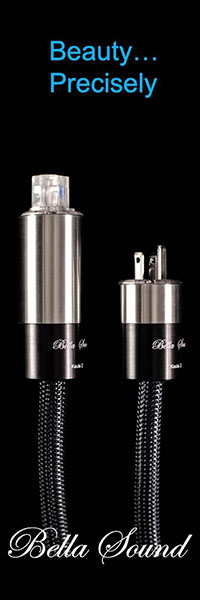
Be the first to comment on: Bybee Technologies iQSE V2s